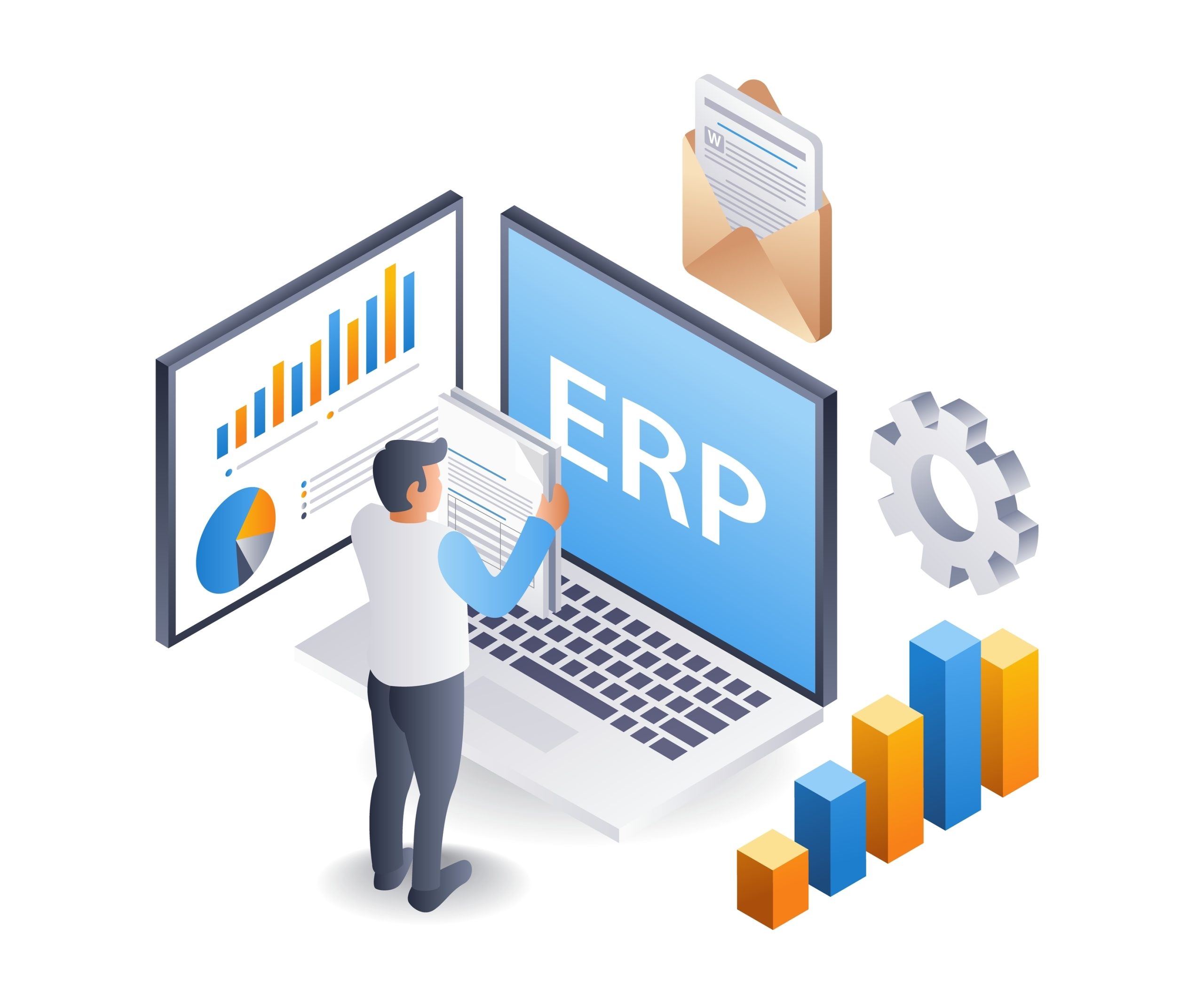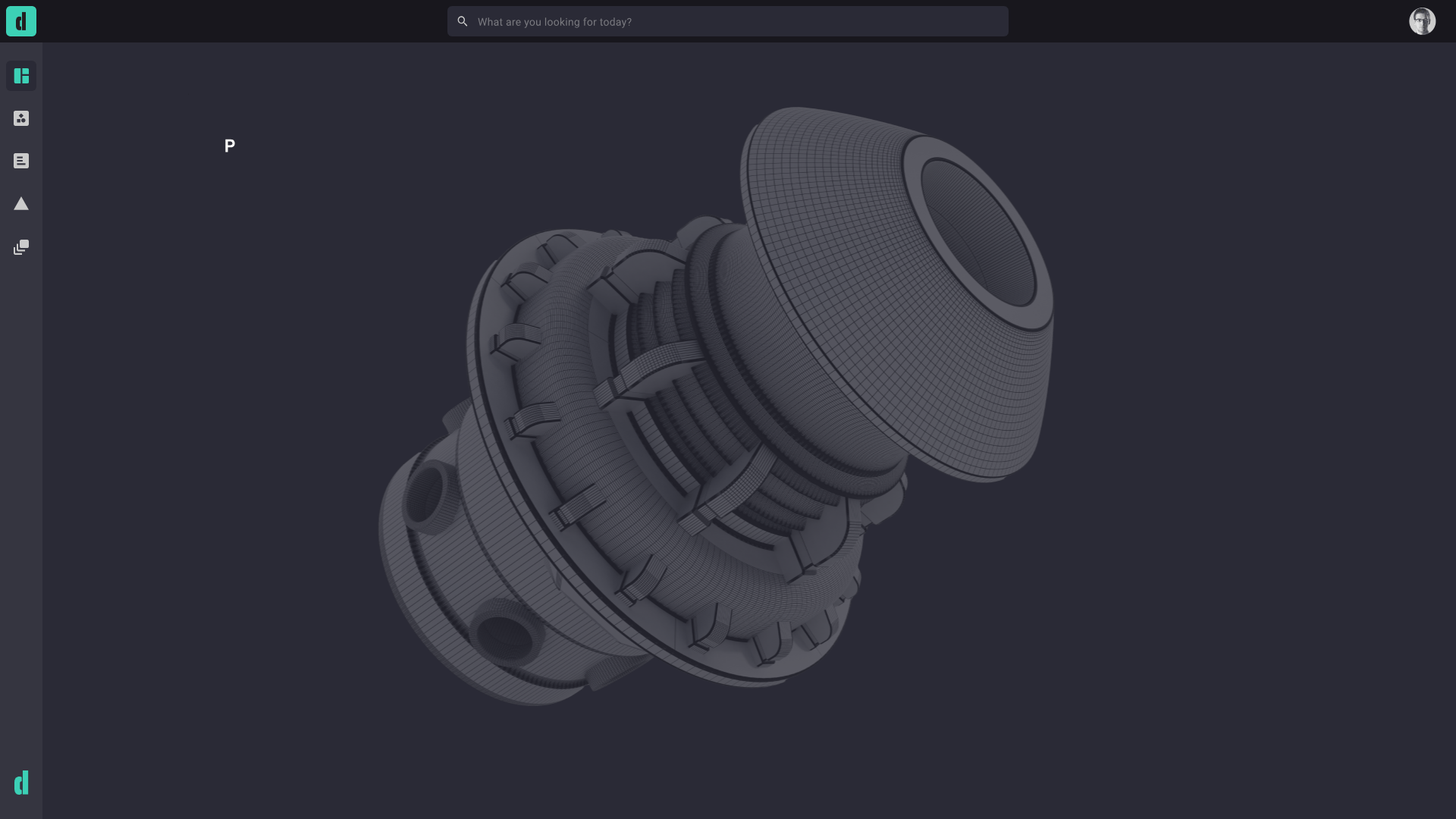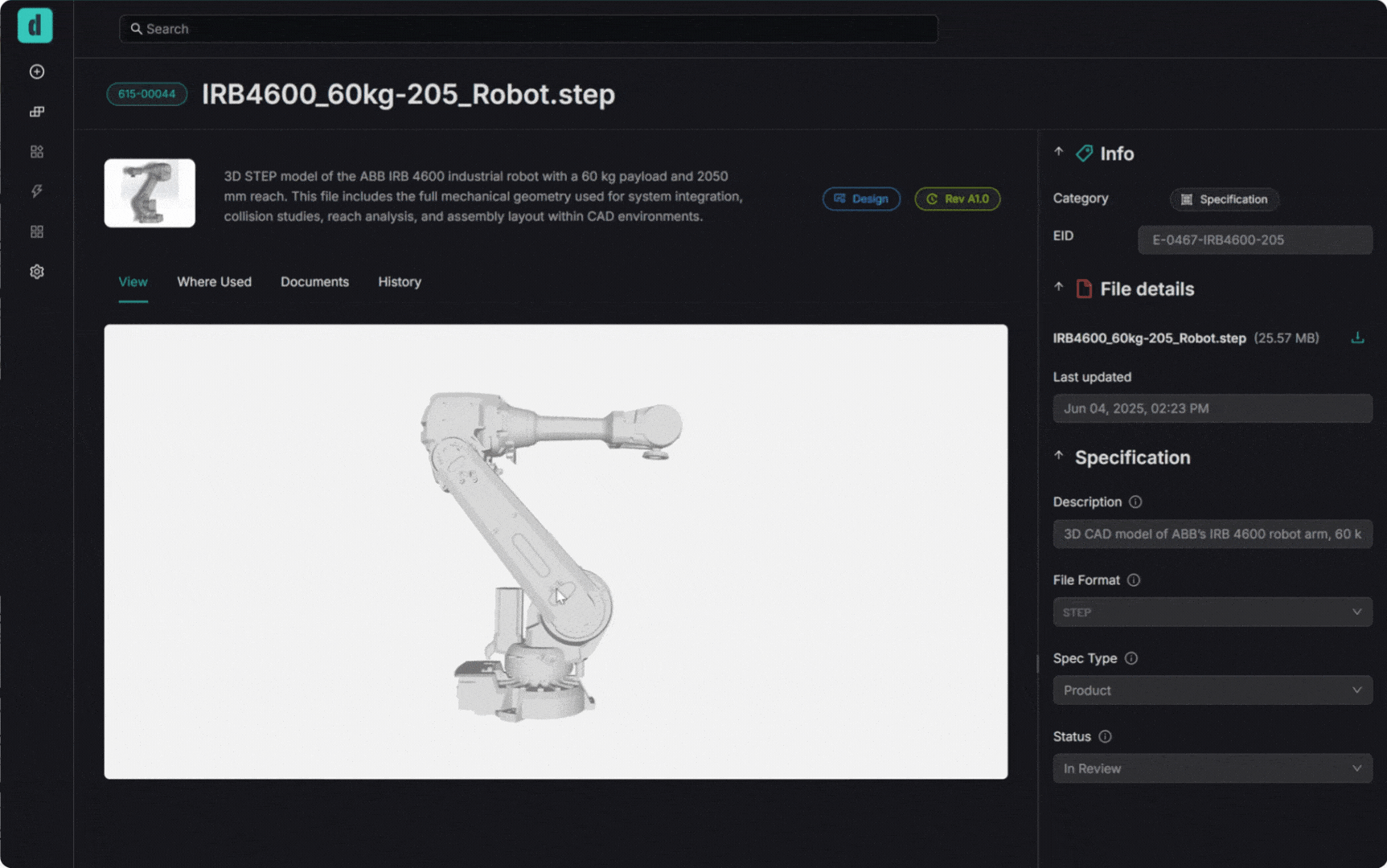TABLE OF CONTENTS
Many hardware companies use enterprise resource planning (ERP) systems to manage purchasing, financial records, and regulatory requirements. These tools are great at managing business processes; however, they aren’t built for the task of managing product data.
Product lifecycle management (PLM) software manages the engineering record—drawings, revisions, bill of materials (BOMs), and change orders—and ensures that data is correct before it reaches ERP. With PLM and ERP working together, teams avoid costly mistakes such as ordering the wrong parts or building from outdated information.
In this article, we’ll look at five PLM platforms that integrate with NetSuite ERP and explore which one is the strongest option.
What Does Product Lifecycle Management Software do?
PLM manages a product’s entire lifecycle, from the first design concept through development, production, launch, and end-of-life. It gives teams a single system to track BOMs, capture design revisions, store sourcing information, and move change orders through approval.
When paired with an ERP platform like NetSuite, PLM ensures engineering data is accurate before it reaches manufacturing and procurement. Without that connection, ERP systems risk holding incomplete or outdated records, leading to ordering mistakes, delays, and unnecessary costs.
The right PLM will easily integrate with a company’s choice of ERP and keep engineering and business systems aligned.
Essential PLM Software Capabilities for NetSuite ERP
When evaluating PLM solutions for NetSuite, focus on capabilities that create a reliable digital bridge between the two systems, such as:
Robust CAD integration(s)
Before product data ever reaches ERP, it needs to move cleanly from the CAD environment into PLM. A good PLM system centralizes designs from CAD tools (SolidWorks, Onshape, and Altium 365) and controls revisions.
From there, PLM maps CAD files, sourced parts, and their metadata into the right fields so NetSuite inherits complete and accurate product records. That connection preserves design intent and gives procurement the information they need to purchase the correct components and plan manufacturing without errors.
Bill of materials (BOM) management
Accurate BOM management is one of the most important features to look for in a PLM. A modern system should automatically generate and assign part numbers as components are created, keeping records consistent and traceable.
With PLM managing the BOM, procurement has access to the latest data to confidently plan materials and track inventory. Once that information flows into NetSuite, everyone involved can see exactly what’s required to build the product and assess cost and profitability early in the process.
Change management
Every product design undergoes revisions, and without a structured process, those changes can be hard to track. A good PLM provides a clear change management workflow so teams can evaluate proposed updates, agree on the next steps, and share decisions across the organization.
Flexibility is key. Some changes may only need quick approval from engineering, while others, like a redesign that affects suppliers, require input from multiple departments. The right PLM lets you configure workflows to match those scenarios, so the process is easy to follow but still rigorous when necessary.
For NetSuite users, this is especially important because the handoff between PLM and ERP often happens during change management. When approvals are captured in PLM, the system can push updated data directly into NetSuite. That way, stakeholders always know what has changed, and procurement and manufacturing are working from the most current design.
Lifecycle status management
Every product and component has a status at any point in development, whether in design, moving through prototyping, full production, or retired. It’s critical to keep those statuses synchronized between PLM and ERP.
When PLM is connected to NetSuite, status updates flow automatically across both systems. Procurement sees when a part is approved for production, manufacturing knows which designs are still in flux, and finance can plan around products being phased out. This shared visibility helps avoid premature purchasing, keeps production schedules accurate, and prevents confusion about which designs are ready to move forward.
Why Connect Your PLM Software to NetSuite ERP?
PLM and ERP serve different purposes, but they work best when they’re connected. PLM manages the engineering product design record while ERP handles manufacturing tasks, procurement, and resource planning.
When the two systems are linked, engineering’s EBOM (engineering bill of materials) can be transferred directly into ERP to generate the MBOM (manufacturing bill of materials). That transfer adds the details of manufacturing needs, like work instructions, equipment requirements, and timelines.
Without this connection, ERP may be working from incomplete or outdated information, which increases the risk of errors, costly delays, or even product failures later in the process. A properly integrated PLM ensures NetSuite always has accurate product data, keeping engineering, procurement, and manufacturing aligned from the start.
The 5 Best PLM Platforms for NetSuite ERP
1) Duro
Duro is a cloud- and AI-native PLM built for modern hardware teams. Duro integrates with leading CAD tools like SolidWorks, Onshape, and Altium 365 while also providing built-in connections to parts distributors and real-time cost rollups. These features give teams clear visibility into both design and sourcing decisions, reducing the risk of errors and delays.
Duro’s integration with NetSuite is designed for speed. Approved changes in Duro can be pushed directly into NetSuite, ensuring BOMs, part metadata, and revisions stay synchronized across both systems. Because the integration is prebuilt, it can be deployed in minutes without custom code or outside consultants.
Benefits of the Duro and NetSuite integration
Duro and NetSuite create a closed-loop workflow that keeps engineering, procurement, and manufacturing in sync and helps hardware teams move from design to production faster.
- Duro’s integrates with NetSuite in minutes, so there’s no need for developer time or outside IT consultants
- Engineers and procurement share access to real-time product data
- Data mapping between systems is straightforward, keeping records aligned
- NetSuite users gain early visibility into engineering changes, helping procurement and manufacturing prepare for long-lead components sooner
2) OpenBOM
OpenBOM is a BOM management tool that helps hardware organizations to manage their engineering BOMs. It offers workgroup collaboration and Product Data Management capabilities to track components, eBOMs, and associated documents.
Benefits of the OpenBOM NetSuite integration
OpenBOM enables the transfer of eBOM data into NetSuite using NetSuite’s API to map data into fields in NetSuite. There are a few manual steps to do this, but once in NetSuite, multi-level structured eBOM data containing component numbers, documents, images and attachments, can be enriched for manufacturing purposes and synchronized with NetSuite.
3) Arena PLM
Arena PLM is a legacy first-generation cloud tool that usually requires significant customization to automate design processes specifically for each customer. It has many features to support customization, which can help companies that are high volume manufacturers of mechatronics and hardware products. However, the user experience is dated and the platform is not as intuitive as some of the newer PLM options.
Benefits of the Arena PLM NetSuite integration
Arena PLM is suitable for NetSuite customers with large and diverse product portfolios that require customization. The integration allows you to automatically transfer product data to NetSuite whenever an engineering change order (ECO) is triggered in Arena.
4) Oracle Agile PLM
Oracle Agile PLM was once a widely used system for tracking product data, costs, and profitability throughout the lifecycle. Oracle entered the PLM market in 2007 by acquiring two commercial platforms, but over time Agile has fallen behind newer, cloud-native solutions.
Oracle has indicated that Oracle Agile PLM will no longer be fully supported after December 31, 2027. This end-of-life status means limited updates, reduced technical support, and growing risks for companies relying on it. Many organizations are now actively evaluating alternatives to avoid being locked into an unsupported system.
Benefits of the Oracle Agile PLM NetSuite integration
Oracle Agile PLM and NetSuite are both Oracle applications, so they integrate easily to transfer information between engineering and manufacturing. However, the lack of ongoing development and support makes Agile a short-term option at best. Companies will benefit more from moving to a modern, actively supported PLM platform that can integrate just as tightly with NetSuite while offering far more flexibility.
5) Autodesk Fusion 360 Manage with Upchain
Autodesk acquired Upchain PLM in 2021, and has since repositioned the platform as primarily a PDM solution. Now called Fusion 360 Manage with Upchain (360 Manage), the platform is best suited for mechanical engineering processes — including managing design revisions and BOMs.
Autodesk is well known for its CAD tools, and integrations between Autodesk CAD and 360 Manage are comprehensive. However, because the platform was engineered for enterprise PLM prior to the acquisition, its UX has not been updated and can seem unnecessarily complex.
Benefits of the Autodesk NetSuite integration
Autodesk has steadily transitioned its CAD customers from perpetual licensing to cloud, making a natural synergy with NetSuite. Product design data, items, documents, and engineering BOMs are released from 360 Manage into NetSuite to create Manufacturing BOMs. Demand forecasting data in NetSuite may be updated into 360 Manage to ensure a closed-loop between design and procurement teams.
Choosing the Best PLM Software for NetSuite ERP
Duro is the most effective PLM for hardware companies that use NetSuite ERP. Its direct integration gives procurement, manufacturing, and finance early visibility into engineering data, so long lead-time items can be planned before designs are finalized. By keeping BOMs, part records, and revisions in sync with NetSuite, Duro reduces errors and shortens the handoff between engineering and operations.
With Duro, every approved change is reflected in NetSuite, giving procurement, manufacturing, and finance confidence that they’re acting on the latest information. By removing manual updates and reconciliation work, the integration cuts down on errors, shortens cycle times, and lowers the operational costs tied to managing product data.
For hardware companies, this means faster releases, fewer costly mistakes, and a tighter link between engineering and the business systems that keep production moving.



